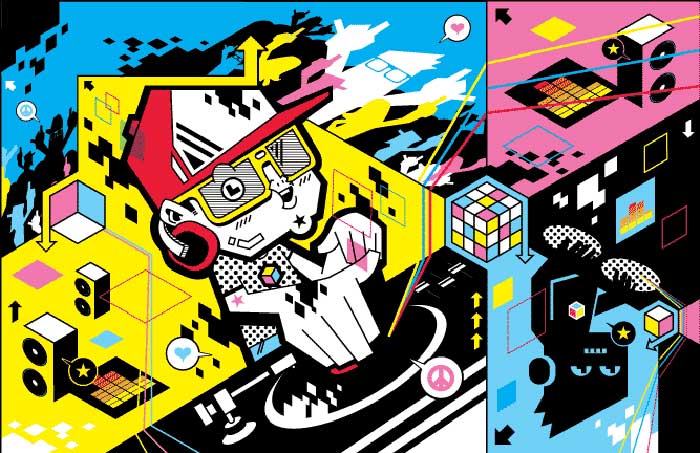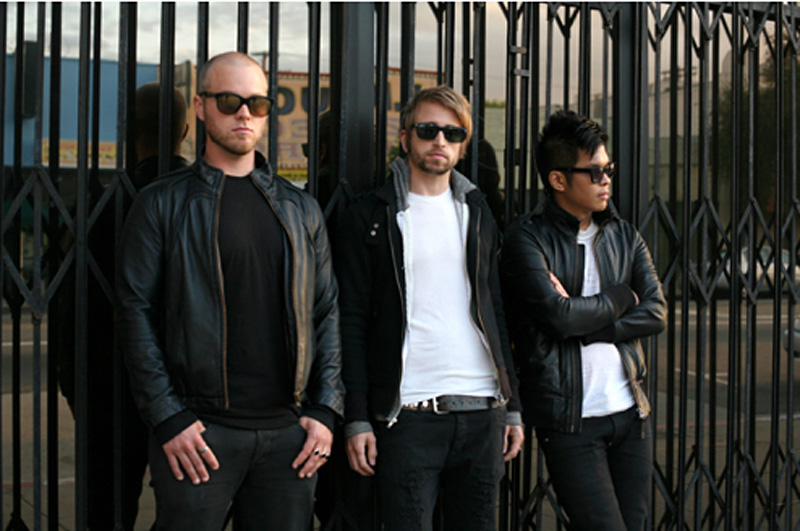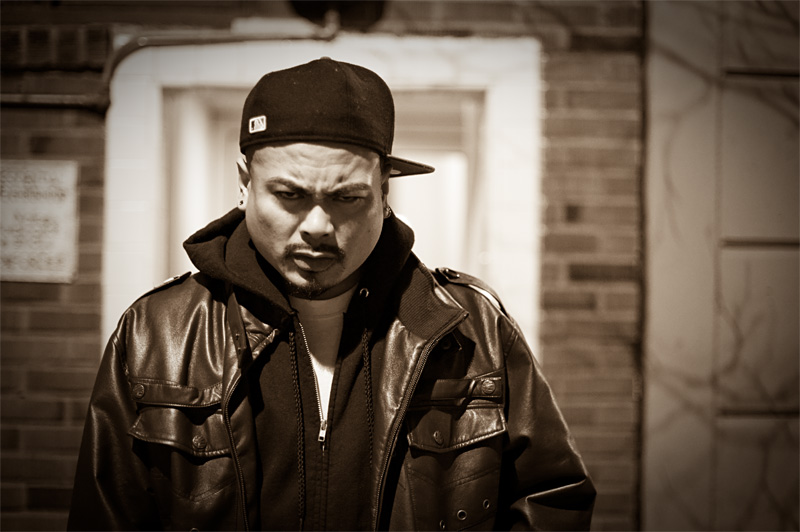On an early evening in late August, Sean Horton, the co-founder of the six-year-old Decibel International Festival of Electronic Music Performance, Visual Art and New Media–aka Decibel Fest–walks into Neumos, stops about 15 feet back from the stage, and begins explaining how he’ll turn this currently barren space into a multimedia Rubik’s Cube.
“I wanna color-code each night,” Horton says, pulling out a green-tinted flyer to indicate the ocular theme of Decibel’s kick-off show. The once local, now global electronic fest runs Sept. 24–27. On opening night, a combination of LED lights and stretched white fabric will turn Neumos into an emerald mini-city; strategically placed projection screens will help those in the balcony or buried at the back see the performances via a live video feed; and six extra sub-woofers will lower the boom for the dub-step sets of the four DJs/producers slated to perform, which include London’s Mad Professor and Benga.
Since its inception in 2003, after Horton returned from Montreal’s Mutek festival obsessed with starting something similar in Seattle, one of the Fest’s key concerns has been pairing the aural and the visual. “We don’t want it to be one long song,” Horton says, as if to assuage people’s fear that they may encounter nothing more than a dull-faced DJ posted behind a laptop. “We want the music and the visual art to change up throughout the evening.”
According to the Fest’s video coordinator, Scott Sunn, many of the visual artists are working with DJs for the first time. “They’ll just kind of improvise in the moment,” he says, noting that aspects of his own video-meets-light show on Sept. 27 at the Triple Door, featuring the folk-inspired ambience of DJ/producer Benoît Pioulard, will have an improvisational quality.
Along with a commitment to stimulating ears and eyes simultaneously, the event always focuses on subgenre-spanning underground dance music. Everything from breakbeat and electro to deep house, IDM, dub-step, and beyond will get thrown at festival-goers from a wide swath of electronic-music artists who often aren’t as recognizable as their subgenres of choice. This means that if you think of yourself as an electronica scholar, take a look at the Decibel roster—you might walk away feeling like a freshman at a community college.
“Part of our goal with Decibel is to expose people to different artists,” says creative director Jerry Abstract, one of the Fest’s co-founders, who will also perform on Sept. 27 at Neumos.
That’s an admirable goal, but one wonders whether the average electronica fan—who may be unaware of, say, Pioulard or the Detroit-style techno of Derek Plaslaiko—might feel alienated when scanning the lineup and considering whether to go. Ditto for those who may be disappointed that the number of Northwest acts has shrunk this year in favor of more international acts, 30 of whom Horton says are making their regional debut at Decibel.
Prominent Seattle-based producer Lusine, who’s played Decibel every year and who will again Sept. 24 at the Seattle Art Museum, defends Horton’s choices. “Sean has a good balance. In order to keep the festival going, you have to bring in the international acts. It’s kind of hard to get a festival to bring in people [from outside the region] if its main focus is going to be on Northwest acts.”
In addition to its biggest lineup yet—more than 130 performers from 11 countries (in contrast to last year’s lineup of 100)—this year’s Decibel is expanding geographically too, with performances in 14 venues across the city, not only on Capitol Hill as in recent years. That’s partly because, while the Fest drew roughly 13,000 attendees last year (an improvement over 2007’s 10,500), organizers expect roughly 15,000 people will come out over the next four days.
And because of the recession, Decibel switched to nonprofit status this year. As strategic development director Rafael A. Irisarri said in an e-mail, “With a very shaky economy, a lot of the marketing budgets were slashed, meaning a lot of our funding sources shrank significantly…That said, we were able to secure a lot more funding than prior years” by tapping into monies previously unavailable under the for-profit model, such as grants.
For Fest-goers, this means more all-ages shows (eight in all), another major change from past Decibels. Horton says the new economic model enabled organizers to add under-21 events, because Capitol Hill venues are generally loath to host them without charging exorbitant fees. But now that the Fest has expanded throughout the city, kid-friendly venues such as SAM have become available, which fits in better with the Fest’s overall mission.
So besides the 15 club events, six afterhours shows, and five audio/visual showcases, there will also be two free park events and a free conference Sept. 24 and 25 at SAM, including panels, workshops, and film screenings. With such a cosmopolitan, eclectic schedule, the Decibel Festival is not only the Northwest’s premiere showcase for underground electronic music, but en route to becoming one of the best in North America, next to Montreal’s Mutek and Detroit’s DEMF/Movement.”I’ve always felt the need to expand our demographic. It’s very heavily rooted in the late-’20s to late-’30s [age range]. But there’s a huge demographic outside of the core electronic/dance community. Hopefully, people will buy a pass and let their guard down.”







